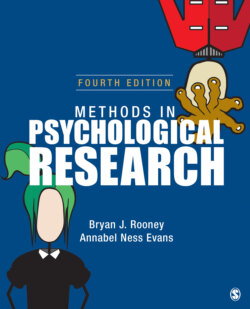Читать книгу Methods in Psychological Research - Annabel Ness Evans - Страница 88
На сайте Литреса книга снята с продажи.
Chi-Square Test.
ОглавлениеDo people prefer Coke or Pepsi? Suppose we have offered both drinks and asked people to declare a preference. We count the number of people preferring each drink. These data are not measures, and means cannot be calculated. If people’s preference did not differ between the two drinks, we would expect about the same number of people to pick each, and we could use a chi-square test, called the goodness-of-fit test, to test our hypothesis. In chi-square, our null hypothesis is that our observed frequencies will not be different from those we would expect by chance.
In the literature, you will likely see the data summarized by reporting the frequencies of each category either as total counts or perhaps as percentages of the total. Then you may read a statement that the frequencies in the groups are statistically significant, followed by a report of the chi-square statistic and p value.
Chi-square is called a nonparametric or distribution-free test because the test does not make the assumption that the population is distributed normally. Indeed, hypotheses about the shape of the population distribution are exactly what we are testing with chi-square.
There are two common chi-square tests: the goodness-of-fit test and the test for independence. The goodness-of-fit test is used when there are categorical data on one variable, as we had in the soft drink preference example. Perhaps a researcher is interested in the relationship between two categorical variables. In this case, you might see the chi-square test for independence. Imagine that our researcher has asked cola tasters to indicate their choice of cola and has also categorized them by age. The research hypothesis might be that preference for cola depends on age. The researcher might think that younger people prefer Pepsi, for example, and older people prefer Coke. Or perhaps older people have no preference. The chi-square statistic is the same for this test as for the goodness-of-fit test. The difference is in the hypothesis. The null is that the two variables are independent (i.e., there is no relationship between them). In a research article, you will likely see a table of frequencies (or percentages), a statement as to whether a relationship was found between the variables, and the chi-square statistic and p value.
